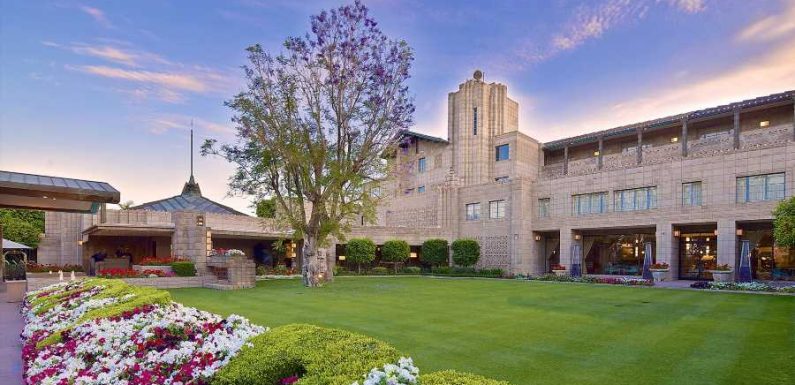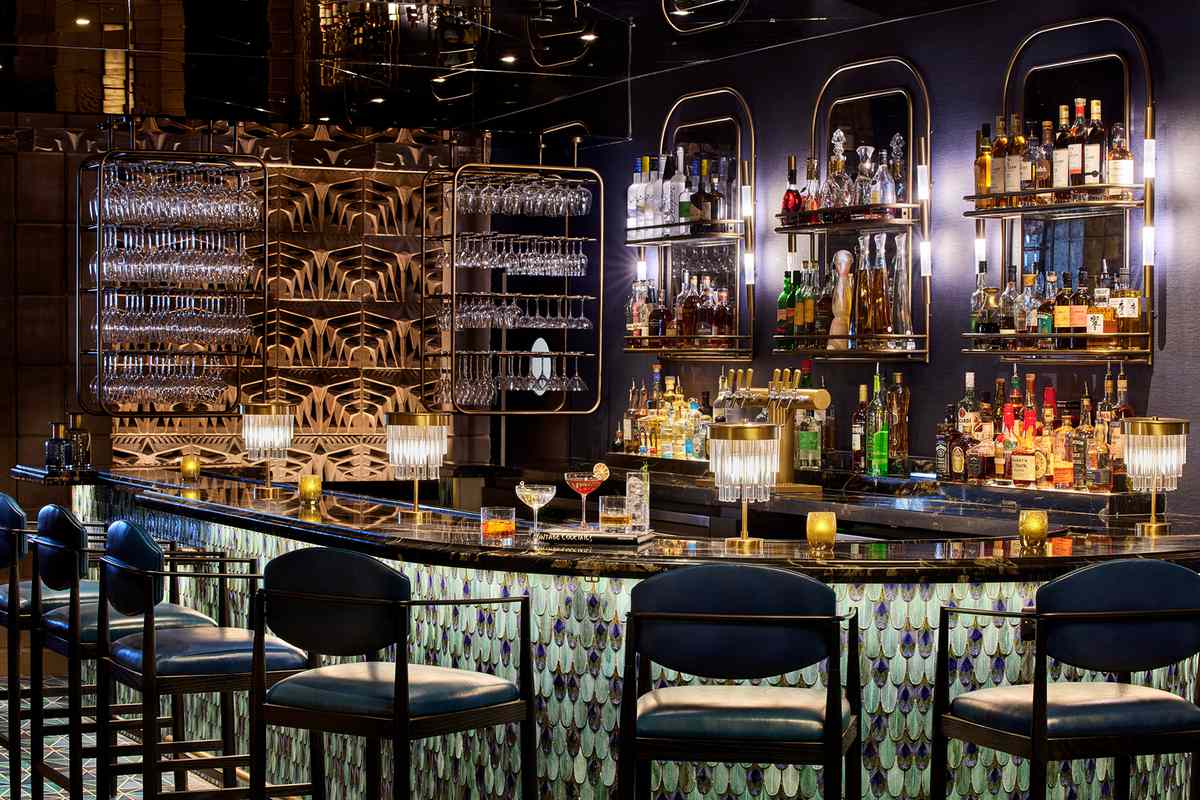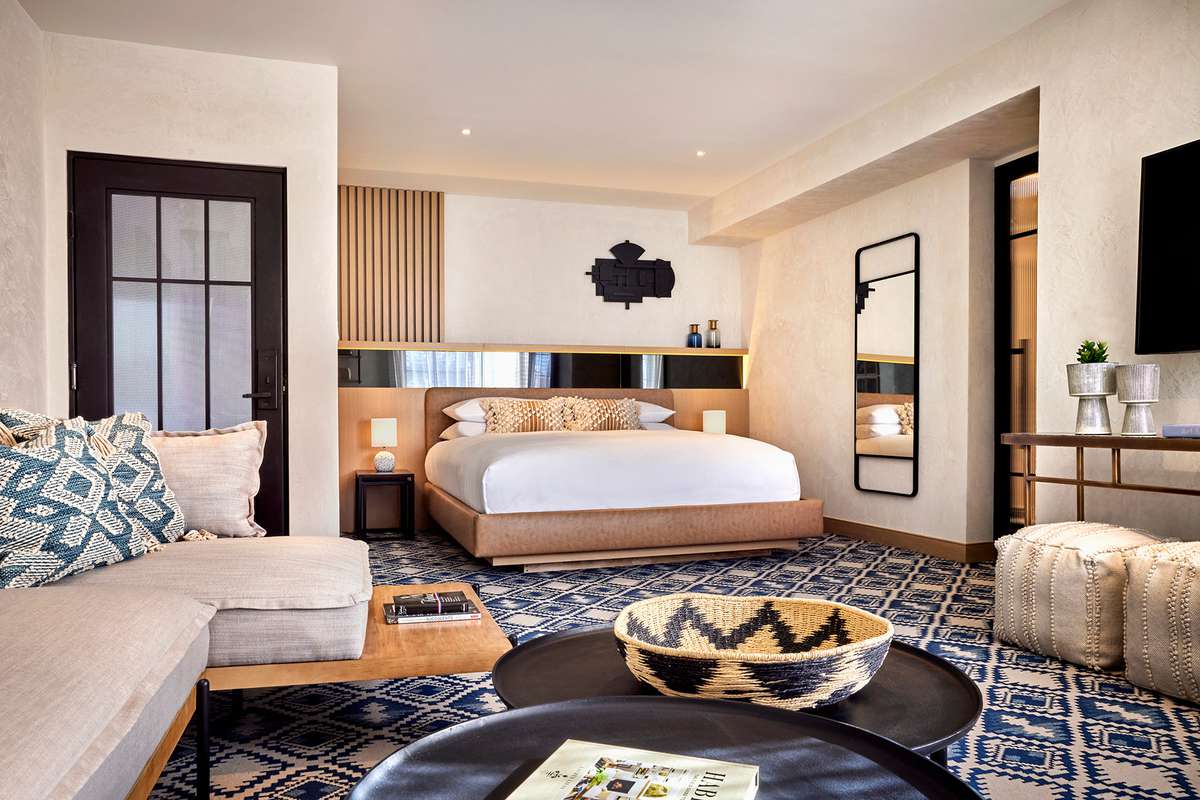
What do Marilyn Monroe, Liza Minelli, Frank Sinatra, and virtually every U.S. President since the 1930s have in common? They've all been guests at the Arizona Biltmore, the storied 1929 hotel in Phoenix that just unveiled a $70 million, 15-month-long transformation.
The resort was designed by a student of Frank Lloyd Wright, Albert Chase McArthur, who received guidance from his mentor throughout the process. (Wright, whose influence looms large in Arizona, had a winter home, Taliesin West, in nearby Scottsdale until his death in 1959 — it's now the headquarters of the Frank Lloyd Wright Foundation.) The property is a world of its own: a sprawling 39-acre complex of over 700 guest rooms spread across a main building and standalone cottages; seven swimming pools (one of which features a 65-foot water slide); six food and beverage outposts (including the outdoor Spire Bar, built from the ground up with a soaring conical tower that's meant to pay homage to Wright's legacy with its scallop-patterned mosaics); and a 12 treatment room spa, Lierra Luna. All of it interspersed with desert blooms and the majestic, endemic Saguaro cacti.
"This was not a renovation. Rather, it was a transformation," says Therese Virserius, the founder and principal of Virserius Studio, the lead interior designer of the project who collaborated with Phoenix- and Los Angeles-based PHX Architecture. "This is a historic hotel, so we wanted to peel off all the layers to reveal its original glory. Where we could not, we referenced old photos to be able to recreate and enhance." This included bringing back the lush gardens that had dotted the grounds in the '30s, and paying special attention to the Biltmore Blocks—a type of precast textile block made of desert sand and designed in 34 geometric patterns that Wright used on his residential projects. The entirety of the hotel is made from these blocks, which were inspired by the grooves of the trunk of a palm tree.
"We embraced the Biltmore blocks, a key architectural element found everywhere at the resort," said Virserius. "In the evening, for example, the lights against the ceiling create this beautiful glow that really brings out the patterns of the blocks. We were also influenced by Frank Lloyd Wright's renowned stained glass. We used that abstract geometry, incorporating it in The Wright Bar and in the adult pool."
For all of its historical reverence, though, the Biltmore feels modern and fresh, thanks to Virserius' interior choices, especially in the guest rooms and cottages. A neutral palette of varying shades of cream, blue, and white feel like a reflection of the landscape outside, and little touches (coffee table books about desert architecture, potted cacti, geometric wall patterns inspired the property's architecture) offer endless visual appeal.
"There are so many elements and details that juxtapose luxury and utility in a delicate dance," explains Virserius. "The Arizona Biltmore is a very layered project, and we wanted to spark curiosity for guests and encourage immersion and connection everywhere."
Source: Read Full Article













